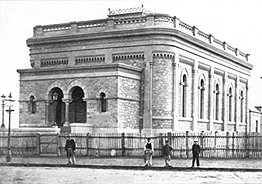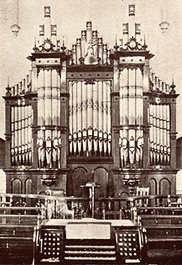Church History
The history of this congregation dates to 1848.
On the 8th of May that year, a group of 21 people left the Ebenezer Baptist Chapel and founded a new community of faith dedicated to the proposition that membership should be open to all who wished to attend, of whatever denomination. Although we would like to claim that they were free-thinking, liberal, non-conformists, they would have been fundamentalists by today's standards. That all changed in the early 1900s, however, when, through the ministry of the legendary A. N. Marshall they became known as the most liberal Baptist church in Australia. It's a label that the congregation has been proud to own ever since.
 In 1850, they built a chapel in Lefevre Terrace seating 350. When that proved too small, they acquired the acre of land in Tynte Street on which the current church was built –– the new building being opened in November 1870. The foundation stone of the Lefevre chapel can be found at the entrance to the current church.
In 1850, they built a chapel in Lefevre Terrace seating 350. When that proved too small, they acquired the acre of land in Tynte Street on which the current church was built –– the new building being opened in November 1870. The foundation stone of the Lefevre chapel can be found at the entrance to the current church.
The Church building is described as "Venetian in style" and the Church's plan dimensions of some 75 feet by 46 are in the "golden section" or ratio that many believe makes for an outstanding acoustic. When opened in 1870, the Church seated 600, and all of them had an unimpeded view of the preacher.

In 1876, the church acquired its first organ, which was installed against the southern wall (the opposite end to the present organ). At the time, it was the largest pipe organ built in the State. In 1890, a new organ was built and was placed in its present position in the Church. With the largest pneumatic action of its day in Adelaide, it was equipped with a mains water driven bellows. An electric motor replaced the water driven bellows in 1929. Rebuilt, enlarged and altered over the years, it is the privilege of this church to hold in trust one of Adelaide's finest church organs, now consisting of a three-manual instrument of 53 speaking stops and 2,456 pipes.
If you are interested in a more detailed history of the Church or the organ, please contact us.